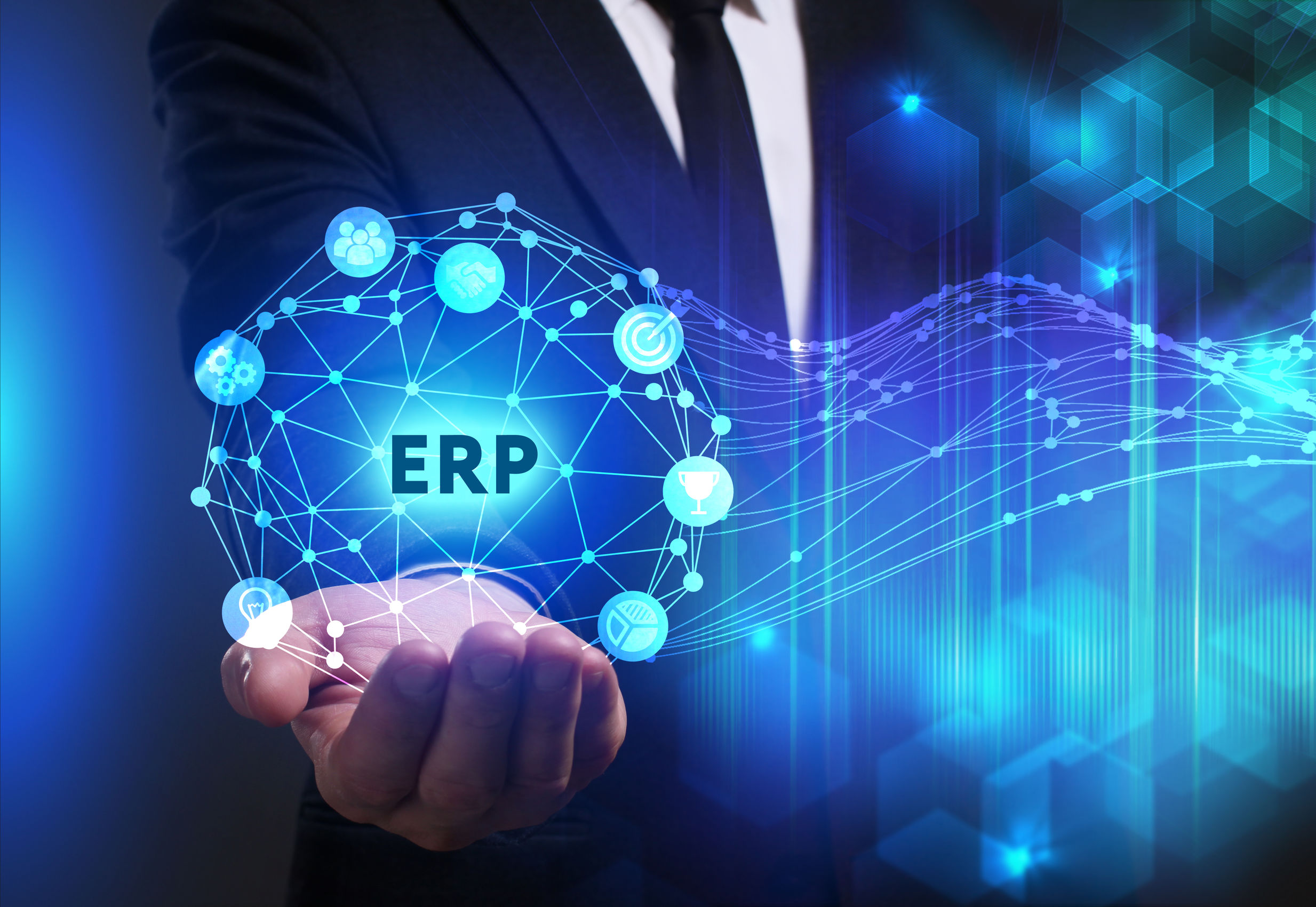If you’re a small or mid-sized business (SMB) owner or executive, you understand that the better you are at business, the more customers you have, and the more products or services you sell, the more complex day-to-day operations can get.
This can be especially complicated if you have growing teams where new employees are routinely added to your roster, or you have high turnover within your company.
Growth and change make it difficult to keep up with new customers, new orders, billing, and all the back-end tasks associated with running an SMB. It’s especially tricky if you’re doing a lot of manual tasks or using spreadsheets or static word processing documents to manage your operations.
In some cases, the opposite can be true.
In today’s COVID-19-influenced business world, you may struggle to keep up not because you’re growing, but because your staffing situation has changed in light of “stay-at-home” orders or because your staff is sick or afraid to come to work because they’re worried they’ll get sick.
So whether you’re growing and can’t keep up or you’re trying to figure out the “new normal” of operating with reduced staff during a pandemic, how can you manage operations more efficiently?
It may be time to think about an enterprise resource planning (ERP) solution.
Did You Know: About 95% of businesses that implemented an ERP said they’ve experienced “significant” improvements in workflow and that today, about 65% of small businesses are using ERP consultation services?
An ERP can help connect all of your core business operations, systems, applications, and processes into a single platform. ERPs offer a wide range of options from orders and billing, to customer relationship management systems (CRMs), to inventory and production management, and more.
The goal of using an ERP is to more efficiently manage your systems and processes to reduce costs, time spent, and resources used while conducting more efficient (and in some cases automated) processes with fewer errors and more accuracy.
But there are a lot of ERP solutions on the market, and, in general, they’re not cheap. So how do you know where to start? As an SMB owner or executive where do you begin and how do you have the confidence that you’re making the best choice for your business, not just today, but for the future?
Here are five tips to help you select the right ERP platform for your SMB.
1. Outline your needs
Selecting an ERP isn’t like shopping for a new car. Sure, they’re both big investments and require a lot of thought and research, but that’s about where the similarities begin and end.
With an ERP, you don’t start with what’s on the market and then decide which is best for you. Instead, you have to start by figuring out what’s best for your business — and what meets all of your goals and objectives — before you take a product out for a test drive.
A big mistake SMBs can make early in this process is starting out with a list of ERP platforms and then trying to figure out how to make a platform work for your needs.
Instead, begin by outlining your business needs and requirements. First, look at your existing processes and systems:
- What works well?
- Where do you have gaps?
- What can you do better?
- Where can an ERP help with efficiencies?
- Which processes are critical to your operations?
- Do you have existing software or applications that handle those processes? How efficient are they now and for your future needs?
In setting your ERP requirements, your starting point should be where your operations are today, but you must also look forward. What will your business needs be in a year? Five years?
It’s important here to include a cross-section of representatives from your work teams for this part. Talk to the people who are responsible for your core functions on a daily level.
- What do they like about your existing processes?
- How do they think they can be better?
- How do they feel about using new tools to help them work more efficiently?
- Are they open to new technologies?
- Will they willingly use an ERP solution if they are well-trained and fully understand the product benefits?
Understanding your requirements both short and long term will set you on the right path to choosing your perfect ERP solution.
2. Set a budget
Once you’ve determined your needs, it’s time to set a budget.
ERPs can be expensive, but you should anticipate recouping some of those costs in savings over the lifespan of your platform.
On average, an SMB can spend as little as $25,000 for a small business ERP to $1 million or more for a medium-sized or larger enterprise. Here are some things to think about when making a cost-estimate for a new ERP.
First, how will the solution be deployed? On-premises solutions often cost significantly more than cloud-hosted options.
Most on-prem and cloud-based solutions come with additional fees like subscriptions, licensing costs (how many users access the ERP), and service.
While some ERP vendors like aACE include access to the entire solution for each named user, other ERPs charge fees for modules for specific business tasks. For example, there may be one fee for a CRM module and another for an accounting module.
This is where step 1 is important. Some vendors offer more modules than you need or will ever use. Don’t get caught up in the “what if you might need this?” sales-push. Know what you need now and for your business in the future. Stick to your list, but be open to professional input, but only if it aligns with your business goals and objectives.
Other additional ERP costs can include fees for training, maintenance, and more. Some maintenance fees can cost at least 15% of your implementation expenses. Let’s say you’re a small business that invested $100,000 in your ERP implementation, could pay an additional $15,000 a year in maintenance fees alone.
If you have existing systems that you’re using for day-to-day operations, for example, accounts payable, you may have more fees for software integrations into your ERP platform.
For licensing fees, depending on vendor, these can range from less than $1,000 to more than $4,000 per year.
Also, if your requirements call for significant customization of a core ERP product, you’ll look at expenses for that, too.
And what about upgrades? Some vendors charge upgrade fees when they release new software versions.
It’s also a good idea to budget for overages. They happen frequently with technology implementations. One study finds that more than half of companies surveyed exceeded their ERP implementation budgets and more than 60% took longer to implement than expected.
If you’d like to make more accurate budget predictions during this step, you may want to work directly with an ERP advisor who can align your requirements to a more realistic budget. To learn more about what goes into the pricing of an ERP implementation, check out our FAQ on how much aACE costs.
3. Review platforms
Once you know your requirements and have your budget, it’s time to look at platforms. There are a lot of ERP solutions on the market, so it’s hard to know which is best for you.
Software review sites like Capterra are a good starting point.
These sites outline core offerings of a variety of platforms, including information about what’s included with a product. You can also make comparisons between competitors.
Once you’ve delved into several review sites, use that information to make a list of platforms that meet the short- and long-term requirements you outlined in step 1 that also fall within your budget.
Then, comb through customer reviews.
You can quickly narrow your list with products that get five star reviews on sites like Capterra. If you feel that list is too narrow, you may want to consider products with four-star or higher reviews.
Don’t just look at product reviews. Seek out information about customer service, training, education, and staff availability for support, too.
4. Demo the product
From your short list, it’s time to see the product in action.
Where you can, first try to find on-demand videos and feature highlights or live webinars online. This can help you further shorten your list. If those types of demos aren’t available, then it’s worth the time to set up an appointment for a personalized demo. Because of COVID-19 restrictions, many companies offer these demos remotely.
High-level product demos can help you narrow your list further.
- Which platform looks easiest to use?
- Which platform will meet your needs with the least amount of customizations and add-ons?
- Which platform do you think your team will be more likely to adopt and use to its full potential?
Try to narrow your list to the top two or three competitors, and then ask the vendors to give you a second demo to take a deeper dive into your top priorities.
At this point, some vendors will set up an account for you and let you loose in the software without any guidance. Others, like aACE, pair this trial period with a paid training process known as Discovery that enables you to experience the software as it would work for you. While not a full implementation, this can help you better understand how the program works and, with your existing knowledge of your team and requirements, you can make better informed decisions about which products appear easier to implement and will be more user-friendly.
5. Select a vendor
Once you’ve sampled a couple of your favorite products, it’s time to select your vendor. Here are some questions you may want to ask before narrowing your pick.
- What’s involved in the implementation process?
- How long does implantation take?
- Will my critical business operations be affected during implementation?
- What type of training do you offer for new users?
- How does your customer support system work?
- How often do you release updates or upgrades?
- Is there expected downtime for updates or upgrades?
- How often does your product need maintenance and what’s required?
- How can you help ensure I have no unexpected or surprise costs in the future?
ERPs are Good for SMBs
Once you’ve selected your vendor, it’s time to begin the ERP implementation process. Soon, you’ll be on your way to more efficiencies for your day-to-day SBM operations.
There are a number of business benefits for adopting an ERP:
- Streamlined processes
- Task automation
- Standardized processes
- Relevant and secure data sharing across multiple systems without repeated re-entry or re-keying
- Less repetitive work for your employees
- More transparency in your operations
- Less chance for errors and fraud
- More productivity
- Data visibility and simple reporting tools
- Improved compliance and audit performance
- More collaboration and better communication across your company
- Improved customer service and more satisfied customers
- Fuels innovation and scales as your business scales
Have questions about selecting an ERP solution for your small business or looking for ERP consulting services? Check out our white paper on choosing the right ERP for your SMB.




